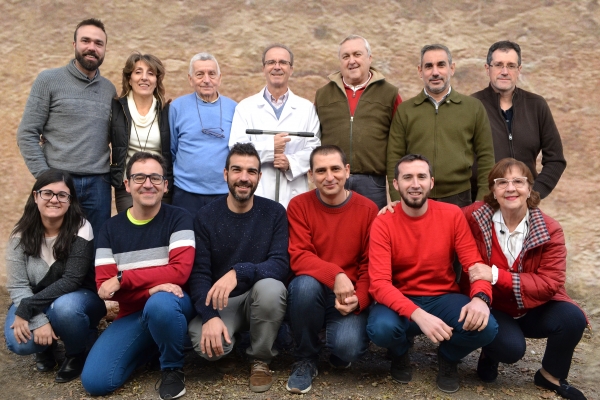NOx gases is the generic term to refer to the group of gases made up of nitric oxide and nitrogen dioxide, gases that result from burning fossil fuel, and also from forest fires, volcanic eruptions and natural processes of transforming nitrogen in soil. Even so, the greatest concentration is usually found in urban areas, where they are toxic for our health and contribute to global warming and acid rain.
The research community has been working on creating decontaminating materials, which when used in buildings and urban structures, are able to trap these pollutants when exposed to light. However, until now, no one had proven the mitigating potential of something in the natural world that supports life on our planet: soil.
In this regard, Unit of Excellence “María de Maeztu” - Department of Agronomy (DAUCO) Professor Vidal Barrón, along with a team made up of researchers from the departments of Agronomy, Inorganic Chemistry and Chemical Engineering and Botany, Ecology and Plant Physiology at the University of Cordoba as well as from other international research centers, discovered that there is an exchange of gases in soil enhanced by solar radiation (mostly ultraviolet) that allows for the sequestration of NOx gases and their transformation into nitrate. In this way, the photocatalytic properties of some minerals would generate “soil photosynthesis” in which soil would capture NOx gases from the atmosphere and change them into nitrate, which is the natural way that plants get nitrogen, an essential for their survival.
This discovery has turned into the missing puzzle piece in the nitrogen cycle, since, though we have known about it for over a hundred years, it did not include the effect of the Sun playing a role in said cycle. Now, solar radiation has become an active agent.
Catalytic activity varies depending on the soil. In sandy soils with a lot of quartz, it is not very significant, whereas clay soils with great amounts of smectite have high rates of NOx sequestration and nitrate fixation. The countryside around Cordoba is a good example of an area with high capacity to eliminate air pollution.
This influential article paves the way for those who work in the field of decontamination and could inspire new techniques to manage fertilizers in order to avoid nitrate loss and mitigate NOx pollution. Moreover, it will help to better understand the characteristics and mechanisms within soil.
Barrón, V., Méndez, JM., Balbuena, J., Cruz-Yusta, M., Sánchez, L., Giménez, C., Sacristán, D., González-Guzmán, A., Sánchez-Rodríguez, AR., Skiba, UM., Inda, AV., Marques, J., Recio, JM., Delgado, A., del Campillo, MC., Torrent, J. (2020)Photochemicalemission and fixationof NOX gases in soils. Science of the Total Environment, 702, 134982. 9, pp. https://doi.org/10.1016/j.scitotenv.2019.134982


